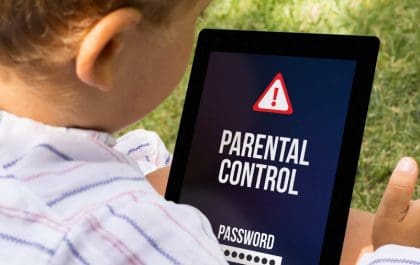As you may know, October was Bullying Prevention Awareness Month, but I chose to discuss bullying this month in an effort to keep us on our toes and to help become aware of bullying year-round. This information needs to be heard by all parents. Your child could be a victim or a suspect of bullying. Both can have serious, lasting consequences.
Do you think you know how to spot bullying? Bullying comes in many forms and can be verbal, or physical. According to stopbullying.gov, bullying is “unwanted, aggressive behavior among school aged children that involves a real or perceived power imbalance. The behavior is repeated, or has the potential to be repeated, over time.” Bullying doesn’t just happen at school. It can happen at the bus stop, on the bus, on the playground, in the neighborhood, on the phone, or on the internet. Cyberbulling, or bullying that takes place using electronic technology, is a scary reality. That’s why it’s so important to monitor our children’s phone, computer, and tablet usage.
There are many signs that may signify your child is a victim of bullying. They include unexplainable injuries, lost or destroyed clothing or possessions, frequent headaches or stomach aches, feeling sick or faking illness, changes in eating habits, difficulty sleeping or frequent nightmares, declining grades, loss of interest in schoolwork or not wanting to go to school, sudden loss of friends or avoidance of social situations, feelings of helplessness or decreased self-esteem, and self-destructive behaviors such as running away from home, harming themselves, or talking about suicide.
Your child might be bullying if he or she gets into physical or verbal fights, has friends who bully others, is increasingly aggressive, gets in trouble frequently, has unexplained extra money or new belongings, blames others for their problems, doesn’t accept responsibility for his or her actions, is competitive and worries about his or her reputation or popularity.
Keep in mind that you may see no signs of bullying and it could still be present.
You now know what bullying is and what the warning signs are. What’s your next step? You play a huge role in preventing bullying. Your awareness and presence are paramount in your children’s safety. Help your children to understand bullying. Talk about what bullying is, tell them that it is unacceptable, and explain how to stand up to it safely. Ensure they know how to get help and keep the lines of communication open. Check in with them often, listen to them, know their friends, ask questions, and understand their concerns. Boost their confidence by encouraging them to do what they love. Special activities and hobbies can help them make friends and protect them from bullying behavior. This last suggestion is very important: Model how to treat others with kindness and respect. They don’t just need to hear it from you; they need to see compassion in your actions. They really are watching you whether you realize it or not.
There is so much to know about bullying. I’ve tried to highlight the most helpful information, but I urge you to visit stopbullying.gov to take advantage of the resources they offer. Look at the website, Google the topic, think about what you want to say, and talk to your children. You might save a life.
Related posts
Newsletter Subscribe
Newest Posts
Set Up a Parental Control for Online Safety
Have you ever wondered how long your children spend in front of a device without your supervision? Yes, it is…
Adopt A Life, Save A Life
By Jeff Ashin, CEO, Young-Williams Animal Center. Photo by: Young-Williams Animal Center Are you or your child thinking of adding…

